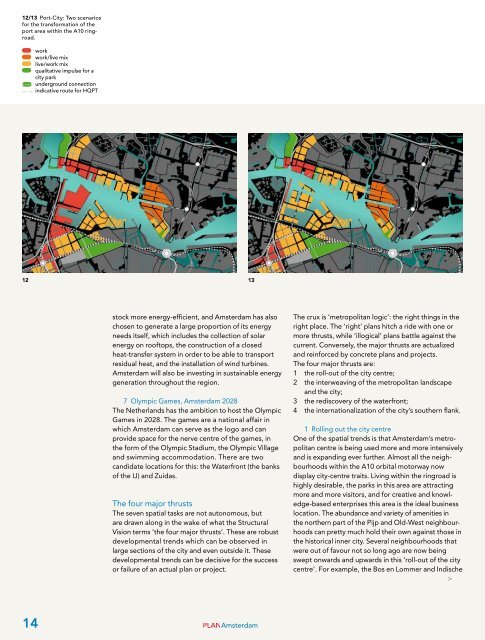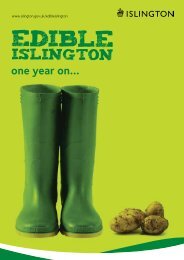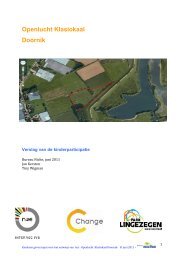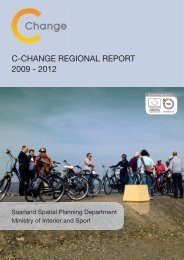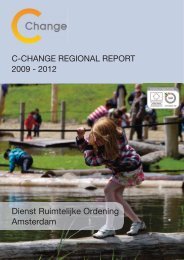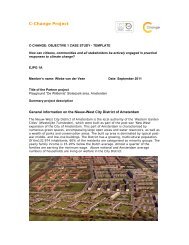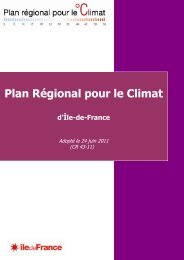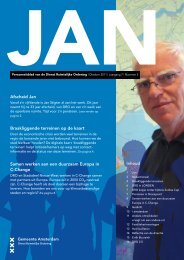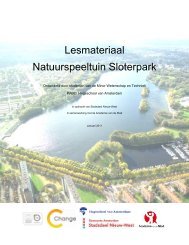Amsterdam 2040
Amsterdam 2040
Amsterdam 2040
- No tags were found...
You also want an ePaper? Increase the reach of your titles
YUMPU automatically turns print PDFs into web optimized ePapers that Google loves.
12/13 Port-City: Two scenariosfor the transformation of theport area within the A10 ringroad.workwork/live mixlive/work mixqualitative impulse for acity park- - - - underground connectionindicative route for HQPT12 13stock more energy-efficient, and <strong>Amsterdam</strong> has alsochosen to generate a large proportion of its energyneeds itself, which includes the collection of solarenergy on rooftops, the construction of a closedheat-transfer system in order to be able to transportresidual heat, and the installation of wind turbines.<strong>Amsterdam</strong> will also be investing in sustainable energygeneration throughout the region.7 Olympic Games, <strong>Amsterdam</strong> 2028The Netherlands has the ambition to host the OlympicGames in 2028. The games are a national affair inwhich <strong>Amsterdam</strong> can serve as the logo and canprovide space for the nerve centre of the games, inthe form of the Olympic Stadium, the Olympic Villageand swimming accommodation. There are twocandidate locations for this: the Waterfront (the banksof the IJ) and Zuidas.The four major thrustsThe seven spatial tasks are not autonomous, butare drawn along in the wake of what the StructuralVision terms ‘the four major thrusts’. These are robustdevelopmental trends which can be observed inlarge sections of the city and even outside it. Thesedevelopmental trends can be decisive for the successor failure of an actual plan or project.The crux is ‘metropolitan logic’: the right things in theright place. The ‘right’ plans hitch a ride with one ormore thrusts, while ‘illogical’ plans battle against thecurrent. Conversely, the major thrusts are actualizedand reinforced by concrete plans and projects.The four major thrusts are:1 the roll-out of the city centre;2 the interweaving of the metropolitan landscapeand the city;3 the rediscovery of the waterfront;4 the internationalization of the city’s southern flank.1 Rolling out the city centreOne of the spatial trends is that <strong>Amsterdam</strong>’s metropolitancentre is being used more and more intensivelyand is expanding ever further. Almost all the neighbourhoodswithin the A10 orbital motorway nowdisplay city-centre traits. Living within the ringroad ishighly desirable, the parks in this area are attractingmore and more visitors, and for creative and knowledge-basedenterprises this area is the ideal businesslocation. The abundance and variety of amenities inthe northern part of the Pijp and Old-West neighbourhoodscan pretty much hold their own against those inthe historical inner city. Several neighbourhoods thatwere out of favour not so long ago are now beingswept onwards and upwards in this ‘roll-out of the citycentre’. For example, the Bos en Lommer and Indische>14PLAN<strong>Amsterdam</strong>


